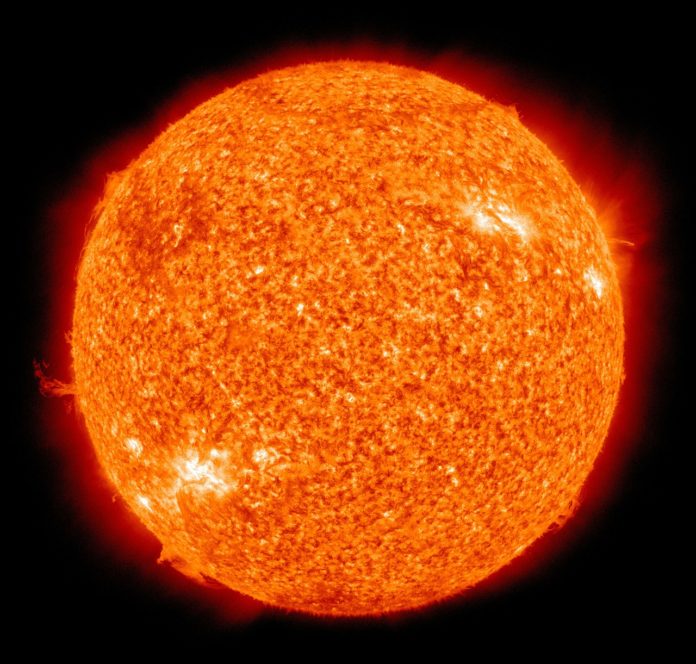There were several big questions in solar physics. For example, how do the sun’s plasma jets form? Why the Sun’s outer atmosphere is far hotter than the surface?
But after long-term research and several theories, scientists have finally found the origin of the high-speed plasma blasting through the Sun’s atmosphere several times a day. Using advanced computer simulation, scientists have developed a detailed model of these plasma jets.
After every 5 minutes, spicules shoot red-hot streams of charged particles into the corona at around 150 kilometers per second. And this totally counterintuitive corona can last up to 15 minutes.
Although further away, it is millions of degrees hotter than the Sun’s surface. The spicules constantly supply hot plasma in temperature. This is like standing some distance away from a bonfire and feeling hotter than the fire itself.
Spicule has been a known term for over a century. But its origin is still a mystery. A study suggested that spicules are generated by massive sound waves. Even a recent study proposed that their formation is due to the magnetic field forming loops out of the atmosphere.
Juan Martinez-Sykora, a principal physicist Bart de Pontieu said, “Observing the spicules from the ground has its limitations. It’s been very hard to get a clear view of what these spicules do, as Earth’s atmosphere creates a murky picture. But thanks to space telescopes, we can now see what they really look like in greater detail.”
Now, scientists developed a computer model that can generate simulations of these powerful sun’s plasma jets in action. This allows researchers to identify various temperatures and physical features.
And according to that numerical model, the formation of spicules happens in three distinct stages. Originally, the surface begins on the surface of the Sun, where churning plasma interacts with the magnetic fields. The magnetic fields then twist and knot during the process, which creates strong magnetic tension trapped close to the surface.
Then in ambipolar diffusion, the neutral and charged particles mix above the surface. This creates an escape route for the building of magnetic tension. Like a slingshot, the magnetic tension is violently released into the atmosphere and out into space at a staggering speed.
Physicist Bart de Pontieu said, “These jets of plasma are ejected so fast that they could traverse the length of California in just a couple of minutes. They can reach heights of 10,000 kilometers, roughly the diameter of Earth, in just five to ten minutes.”
Next, scientists analyzed the data from NASA’s Interface Region Imaging Spectrograph and the Swedish Solar Telescope to see the simulations. They found that the simulations recreated the properties of actual spicules, including size, speed, and shape.
De Pontieu said, “It’s exciting because it explains why the solar atmosphere is millions of degrees hotter than the surface.”
The study demonstrates how the plasma jets blast millions of degrees of heat into the scorching corona, along with solving the long-term mystery of how spicules form. Now, scientists can look closer at how they interact with the outer reaches of the solar atmosphere.
Journal Reference
- Martínez-Sykora, J., Pontieu, B. D., Hansteen, V. H., Carlsson, M., & D. Pereira, T. M. (2017). On the generation of solar spicules and Alfvénic waves. Science. DOI: aah5412
